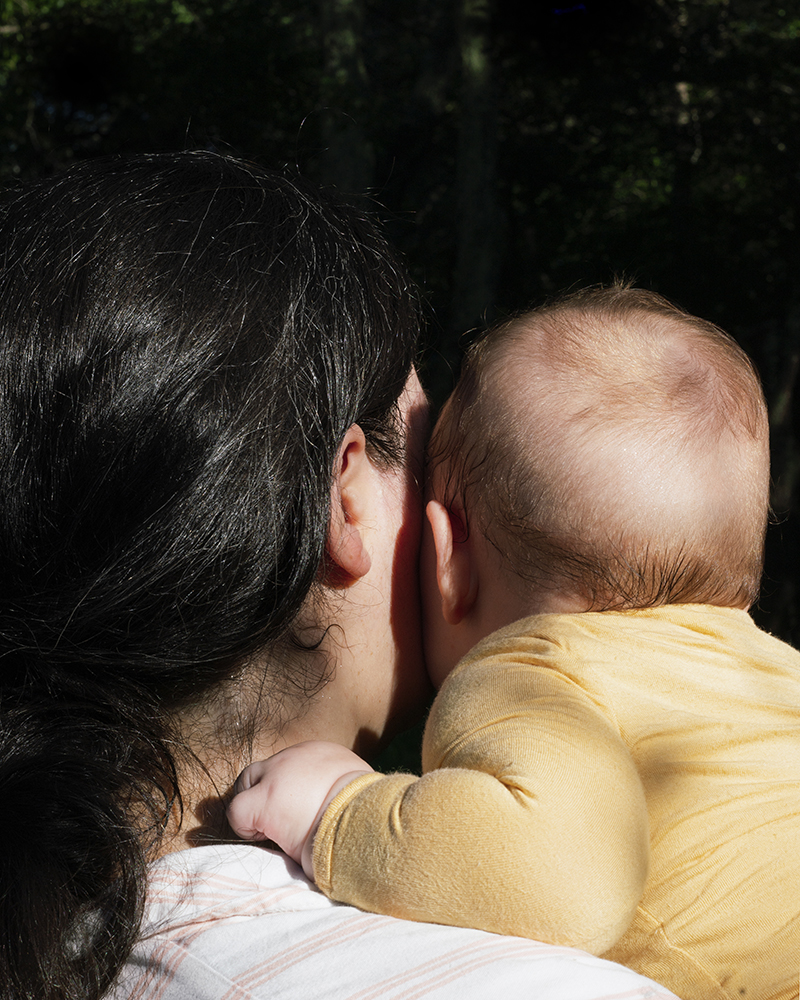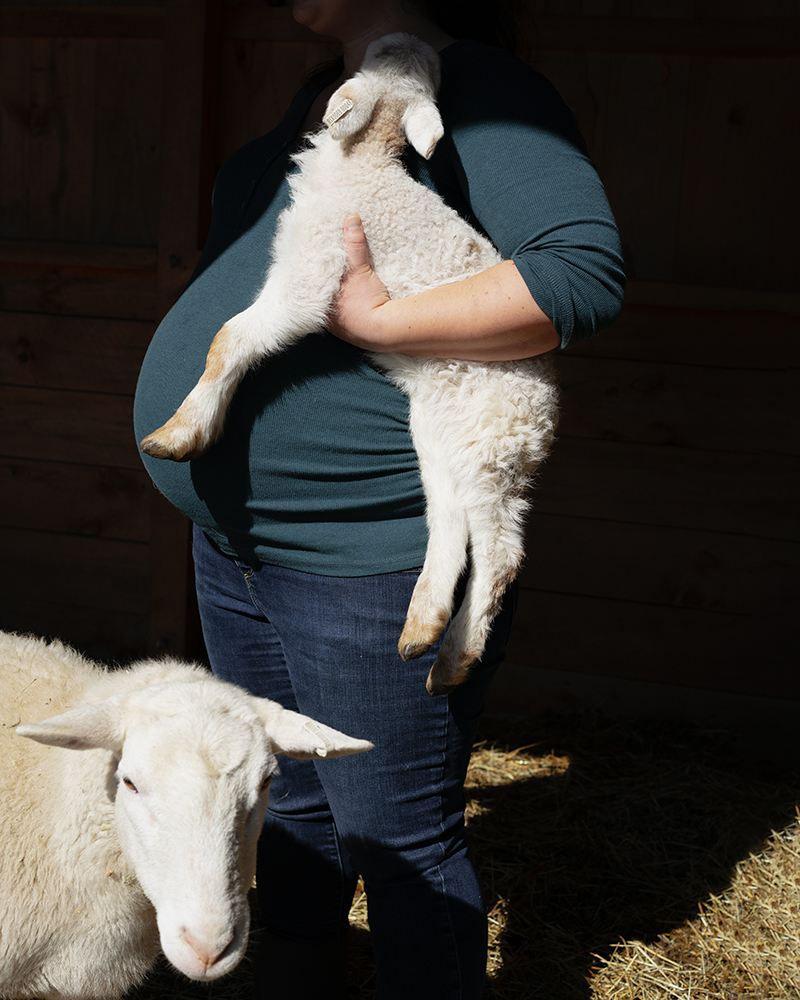Hannah Altman is a Jewish-American artist from New Jersey and based in Boston. Her photographs portray lineage, folklore, memory, and narrative.
How does a new project start for you? Do you prefer to take notes by doing research around the subjects you are interested in or do you prefer to shoot first, taking visual notes and developing them?
A new image typically starts to form when I’m thinking about a particular object, story, or ritual, and how it might translate into a photographic narrative. I often collect props and reach out to collaborators but have months go by between the idea and the execution while waiting for the environment (lighting, mostly) to be right.
Most of my work employs Jewish visual culture in some way, and from this basis a lot of my projects bleed into each other; leaving no distinct marking for the beginning or end of a thought. I like this permeation; it allows me to make new things and not have to worry about if it “fits” right away. It also allows me to keep these props and ideas, sometimes photographing the same scene multiple times over several months before it feels right.
In your previous interviews, I’ve read that you’ve been influenced by Jewish rituals, iconography and folklore’s storytelling. Could you tell us a bit about this interesting element?
My work is steeped in Jewish folklore. I use the stories, rituals, and symbols as the foundation to build photographs on. I’m interested in how using deeply rooted historical facets can lend itself to creating new photographic narratives. I’ll often nod to a particular aspect of Judaica and contextualize it into the environment that I’m photographing, in order to reshape and expand how that aspect is read in a photograph. The images are propped up on the themes of Judaica, and together as a project they start to build a language. Judaism is the world that they inhabit and the outlook through which we view them. In this way the work feels both rooted and growing. The photographs are a link on a chain of Jewish cultural memory.
In your artistic practice in general, as well as in the series ‘With Rifts and Collapses’ we see that you make extensive use of direct natural lighting. Seeing all your work since 2015 makes sense, although how did you decide to experiment more with natural light than artificial light?
I feel most drawn to making images that have a really direct natural light source that helps carve the subject matter out of the shadows. I love the idea of having light be very present in the work, almost its own character. A sharp light guides us through the photograph but also restricts us from complete access to the environment; it becomes both the path and the obstruction.
It is evident that you successfully create images of symbols with universal resonance. How do you avoid your images having a diary feel even when using you as a protagonist in self-portraits?
While my body is in a lot of the images, I see them as performative character studies rather than diaristic self-portraits. I think in this context my body is mostly a storytelling tool, and is demonstrating a narrative truth but not a singular one. There is a sense of ambiguity and malleability in photographing myself this way, so even if there’s projects that are a mix of myself, family, and extended community, it’s less about the individual and more about the staging for the camera.
What are the possible dynamics between photography and text (including image titles) – how and when do they enhance each other? Besides the title of your series, why do you prefer to give a title to each image separately?
An interesting aspect of Jewish writing compared to Jewish photography (in a very broad sense), is that while both activate a sense of literacy, there is just so much more writing. It makes for great source material, having so much to base images on. My photographs are a translation of Jewish narrative devices in that they mirror the ways that Jewish stories are shared, rendering those frameworks into narrative photographs. There is a very strong kinship between photographic language and text; they both crave to be read beyond the surface.
For some reason when I recall your work, I first think of prints in frames, at festivals and galleries. Do you prefer to see your work more in book form or in exhibition spaces? You also have a monograph ‘Kavana’, published in 2020 by Kris Graves Projects.
They both lend themselves to different reads. In my (now sold-out) book Kavana, the smaller size and pacing encourages intimacy. I’m really pleased with how the book feels on a sensory level. On the walls, I create rhythms with the layout of the work by varying spacing between works, putting certain images in conversation with each other while others punctuate the space. In gallery spaces these works are typically on the smaller side, around 18×22 inches, and I think that helps them feel more connected to and in dialogue with the viewer’s sightline.
What is the biggest difference in the way you perceive photography today compared to your early days at university or your first shots? What has remained completely the same?
When I was younger I was photographing at any free moment. I was creating a ton of work but not much of it stuck in my portfolio for more than a few months. I think this sort of feverish making was necessary as a young photographer. These days I try to linger on ideas as long as possible, work more slowly, and photograph the same things over and over again to keep refining an idea. This pace has nurtured a sense of fullness in my images that didn’t show up until I learned to look slowly. In grad school a mentor told me that shooting as much as you need to in order to make around 12 solid, resilient images per year was a successful pace; I remember that sounding outlandish but years later I have a totally different opinion on resisting the rush.
More on her website














